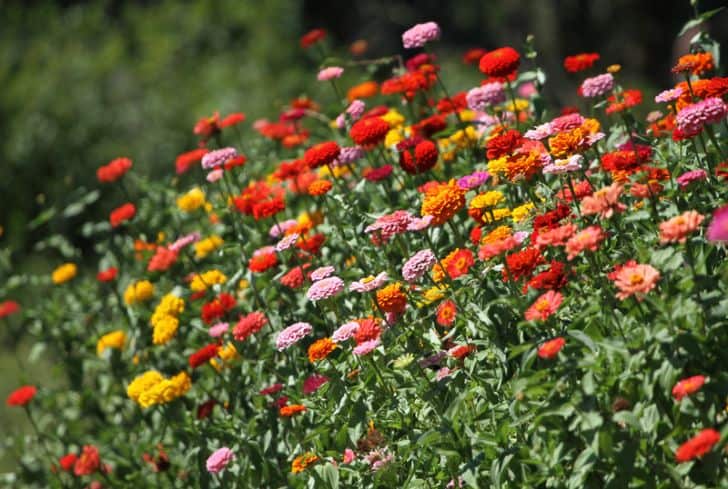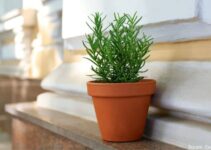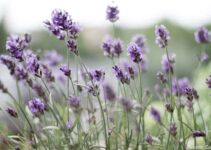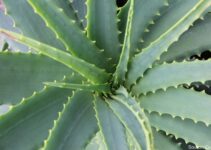One of the easiest and hardiest annuals to grow is zinnias. These bold flowering beauties add seas of color to any garden or patio with the ability to almost thrive on neglect. Zinnias may take the cake when you are looking for a low-maintenance option. But providing zinnias with the proper environment can help them thrive and produce even more showy flowers. But do zinnias need full sun?
Does Zinnia Need Full Sun?
Zinnias are a flowering annual that is native to Mexico. These quick-growing and bold flowers need full sun to thrive and produce as expected. So be sure to plant them in an area that receives at least 6 hours of sunlight daily.
Commonly grown in cutting gardens, zinnias are a flowery favorite for novice and experienced gardeners alike. Whether they are hoping to add some color to their patios or create stunning bouquets and arrangements, zinnias are a hardy and showy annual that produces blooms all season long.
How Much Sun do Zinnias Actually Need?
Like all flowering plants, zinnias bloom better when they receive adequate sunlight. This is because plants rely on photosynthesis to create energy that is later used to grow, repair, feed, and produce flowers. During this process, the plants take energy from the sun and change it into energy they can use. Thus, the more sunlight a plant gets, the more it will thrive. But how much sun do zinnias actually need?
Zinnias do best when they have at least 6-8 hours of full sun daily. During the late spring or early autumn, direct sunlight is usually fine. However, some dappled afternoon shade can help protect your plant’s petals from sunburn and overheating during the hottest parts of summer.
If your plants are getting too much sun, you may notice brown or black spots on their leaves and drooping heads in the afternoons. While it’s impossible to move the plants after they have been planted, consider adding some shade for them during the peak sun hours.
It’s also important not to water the plants out during the hottest parts of the day. Instead, opt to water them in the early morning or late afternoon when the sun isn’t as intense. Be sure to water the plants at their base and not over their heads and leaves, as this can create an opportunity for fungal infections to grow.
Do Zinnias Come Back Every Year?
Zinnias are considered annuals, meaning the plant itself dies back at the end of the season. Instead, new plants grow from seeds that were released by last season’s zinnias. The seeds can be harvested and stored for the winter or left in the soil to grow in the spring.
If you live in an area with freezing winters, it is best to save your zinnia seeds indoors rather than letting them self-seed. Zinnias are not tolerant of frost or freezing temperatures, and very few seeds will survive the cold and snow to bloom in the springtime.
Saving zinnia seeds is easy. Simply remove the head of the zinnia plant and allow it to dry out. Store it in a seed bag or a ziplock bag and place it in a cool, dry, dark space until springtime. Be sure that the space you choose isn’t too cold; as mentioned, the zinnia seeds don’t tolerate low temperatures well.
How Long Do Zinnias Bloom?
When you are planning your garden space, many gardeners like to offset bloom times, so there are always flowers in their garden. While greenery creates a peaceful and tranquil environment, flowers create visual interest and depth along with pops of color throughout the spring, summer, and autumn seasons. So, how long do zinnias bloom?
Zinnias will bloom from the last frost of springtime until the first frost of autumn, providing the gardener with an entire summer of colorful and beautiful blooms. While each flower will bloom and fade, zinnias are quick to rebloom and can be encouraged to grow more by deadheading each spent flower.
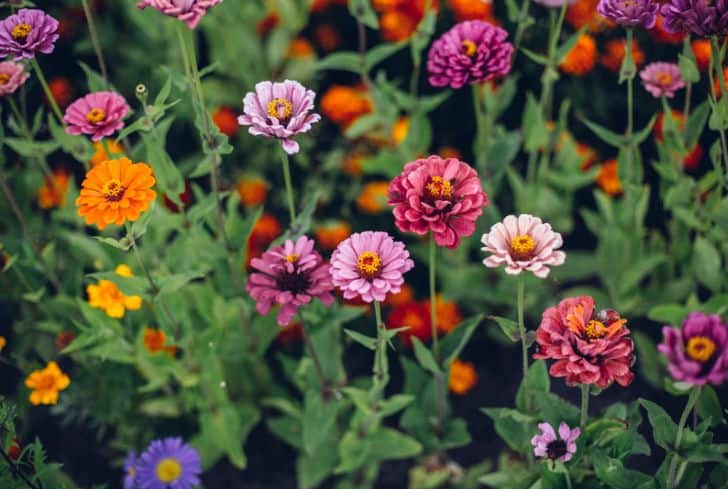
Many people grow zinnias as cutting flowers to remove from their garden and place them in a vase to decorate their homes or tables. When considering if a zinnia is ready to be picked, grab the stem about 12 inches below the flower and give it a little shake.
If the head of the flower droops or is wobbly, the zinnia is not ready yet. However, if after the shake, the zinnia’s head remains in place, go ahead and cut the flower from your garden and place it in a vase. Once in the water, the zinnias will remain for about 12 days before fading.
How Much Water do Zinnias Need?
Sunlight, water, and soil are the three most important factors in whether or not a plant will thrive. Providing your zinnias with the correct amount of each will help ensure large and frequent blooms all season long. But, how much water do zinnias need?
Young zinnias will need about an inch of water a week. It’s best to deeply water 2-3 times a week when the plants are young. Ideally, the top 7-8 inches of soil should be moist when the zinnias are beginning to grow. Once the plants are established, water only when the ground seems dry or there hasn’t been rain for a week or two.
Drought or hot conditions will create a much thirstier zinnia plant than ideal conditions. While the zinnia is used to humidity and heat, too much direct sunlight and lack of water to balance it out can create problems for your flower garden.
It’s also essential to plant your seeds an adequate distance from one another to allow optimal resources for each seedling. For example, spacing the seeds 6 inches from one another and rows 12 inches from the other will help decrease the fight for resources and allow for a thriving zinnia season.
Do Zinnias Self Seed?
Zinnias provide season-long color and will continue to bloom until the first frost of the year. Since the zinnia flower is unable to withstand the cold, the frost will kill the plant. Zinnias are considered annuals, but they do produce seeds that will grow into next season’s zinnia flower bed if left to germinate.
Zinnias will self-seed if left to wither and dry out. Many gardeners will cut zinnias throughout the summer months and only allow the last blooms to turn to seed. You can either crush the dried seed pods with your hands or dance your way through the dried-out garden bed to help spread the seeds. It is also common to harvest the blooms at the end of the season, remove the seeds yourself, and store them until the next spring.
You can purchase zinnia seeds at your local garden center if you would like to start your flowers from scratch. Since each flower will produce its own seeds, you will ideally only need to invest in seeds once to enjoy years of bold and colorful summertime blooms.
When to Plant Zinnia Seeds?
Many people like to add zinnias to their gardens. Whether you are hoping to grow them as cut flowers for vases or simply love the color they add to your outside space; it’s important to know when you should plant zinnia seeds.
Zinnias are native to Mexico and are not tolerant of cold weather. Since they won’t survive a frost, be sure to plant them outdoors once the temperature stays consistently over 60 degrees Fahrenheit. If you live in an area with a long, cold winter, you can start your zinnia seeds indoors.
However, if you live in an area that warms up quickly in the early springtime, you can plant your seeds outdoors after any chance of frost has lifted.
Luckily, zinnias are fast-growing plants, and some varieties will go from seed to flower in less than 60 days! If you want to enjoy the colorful blooms earlier in the summer season, you can start your zinnia seeds indoors, where the temperature is controlled. Doing this will allow you to plant mature zinnias in your garden instead of staring at barren soil and waiting for seedlings to emerge.
Do Zinnias Need to be Deadheaded?
Zinnias are hardy plants that are often grown in cutting gardens. However, even if you don’t want to cut the flowers out of your garden, it’s in your best interest to remove the spent flower heads in a timely manner.
Zinnias do best when they are deadheaded once their blooms begin to fade. Removing the spent flowers will signal the plant to produce more flowers, creating a season of endless color in your garden.
To properly and effectively deadhead your zinnias, use sharp, clean sheers for each cut. You will want to cut the stem above the highest leaves to ensure that your zinnia stays tall. The plant will then focus its energy on flowering instead of growing in height.
After each cut, sterilize your shears with rubbing alcohol to prevent the spread of bacteria, fungus, or pests from one plant to another during the deadheading process.
Be sure to wear gloves when handling zinnias, as the plants produce a sulfur compound that can cause mild irritation to human skin. It’s advised to always wash your hands before and after handling your plants to help prevent the spread of diseases or skin irritations.
